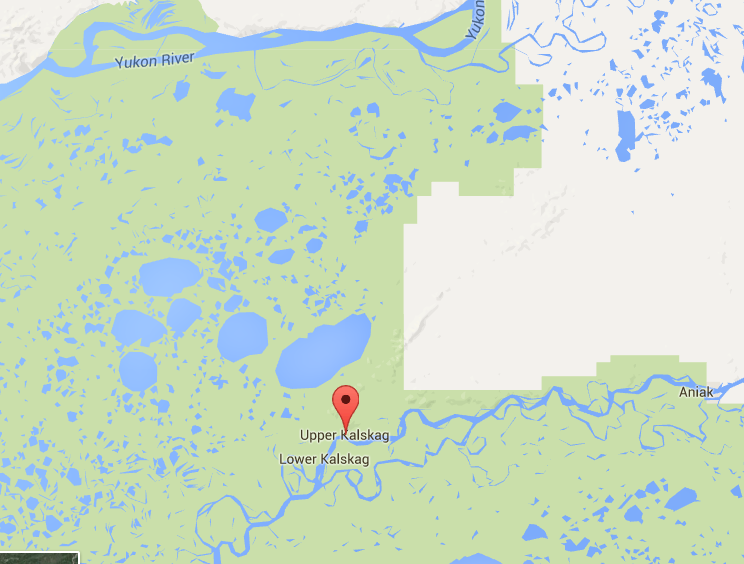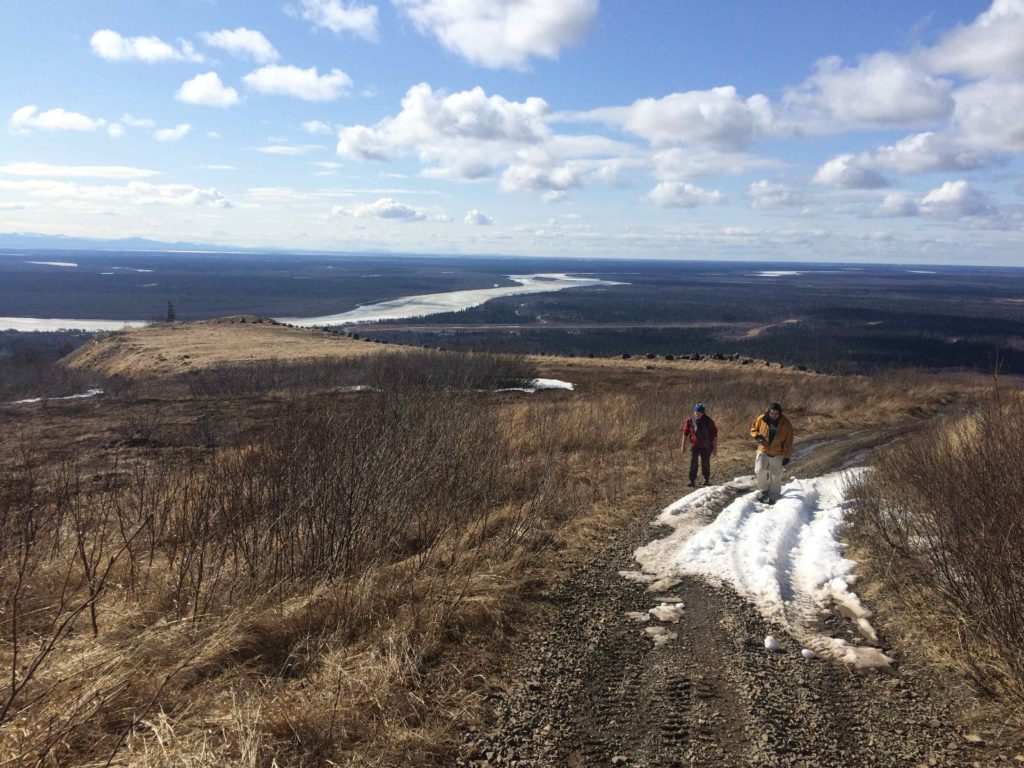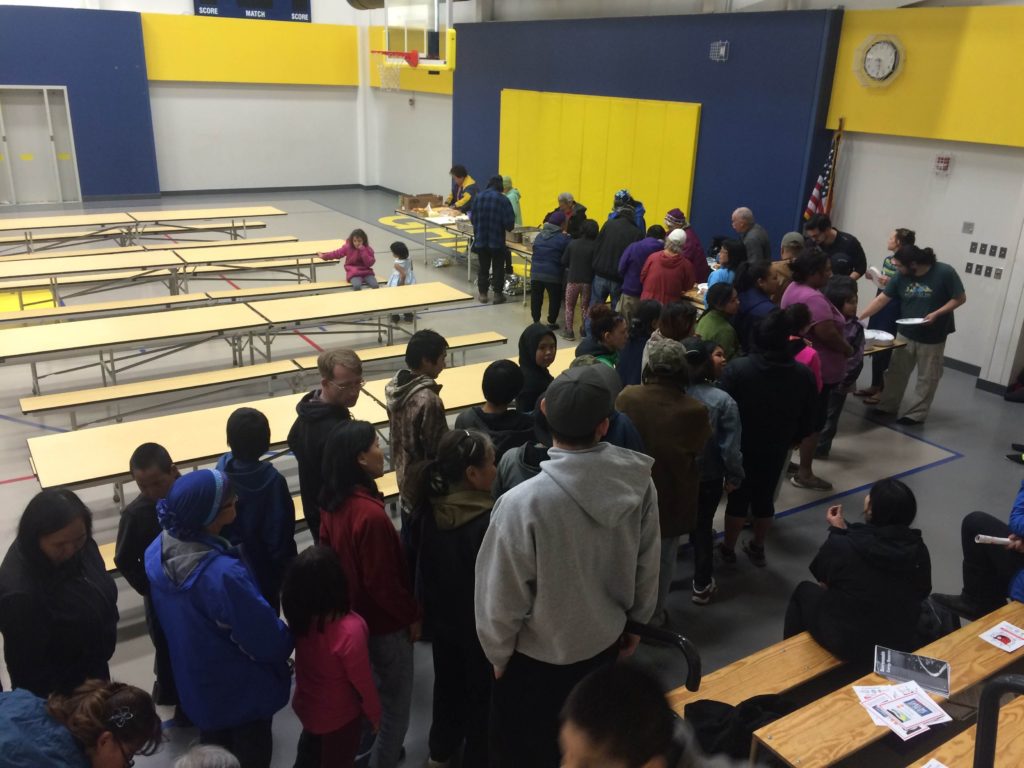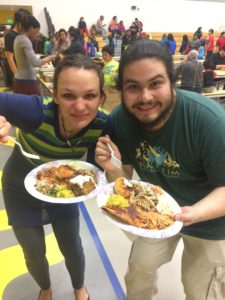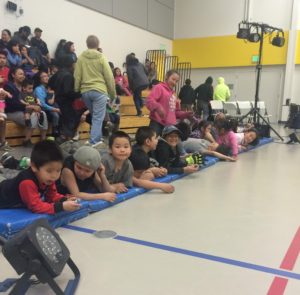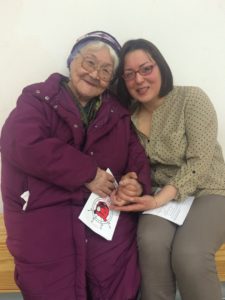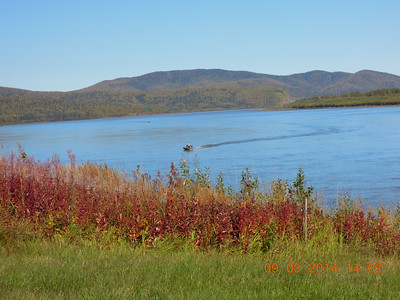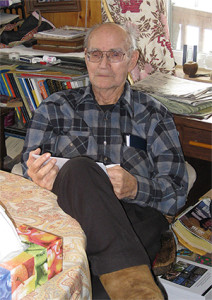 Recollections of Sidney Huntington
Recollections of Sidney Huntington
(1915-2015)
By Anne Hanley
On Dec. 11, 2015, Koyukon Athabascan leader Sidney Charles Huntington was laid to rest on a bluff overlooking the Yukon River. The spot was near where he used to run a trap line and not far from the site of his fish wheel. He was 100 years old.
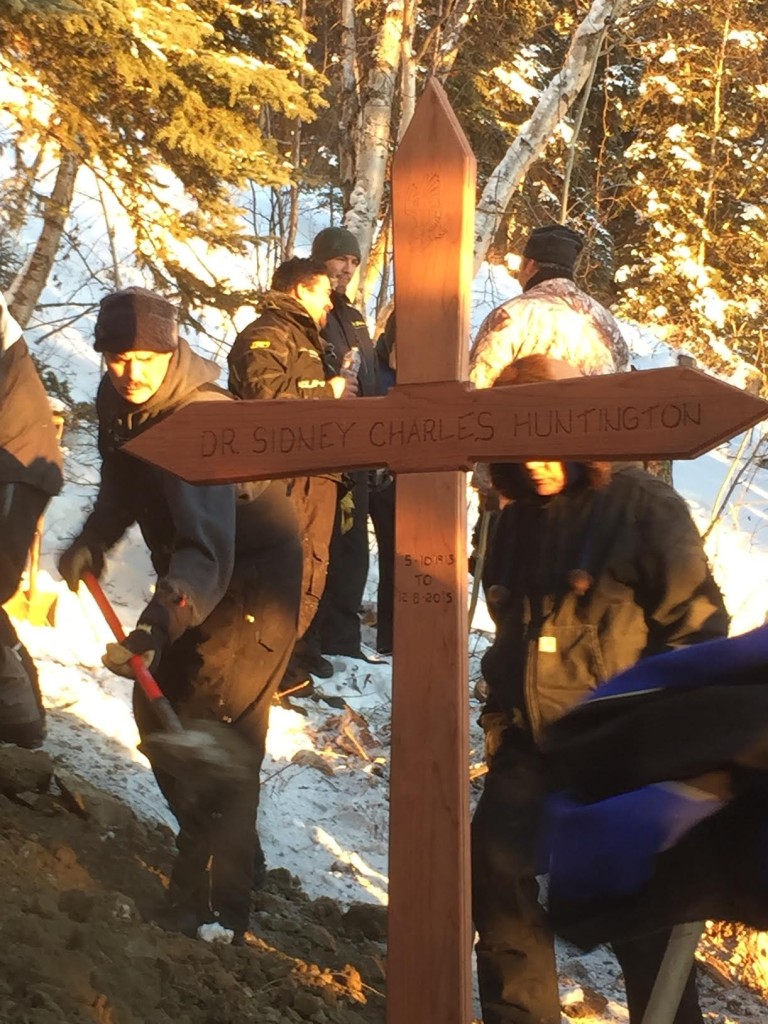
Photo by Karrie Pavish Anderson
When an elder dies, a bridge between the past and the future is washed away. Sidney’s death leaves a huge, gaping chasm. He knew the chiefs and the medicine men. He knew the animals and the rules for how to show them respect. He knew old ones who hunted bears with nothing but spears and who spoke the old Koyukon high language. He knew missionaries and traders and miners. They’re all gone and now he’s gone too, but, lucky for us, he left a book.
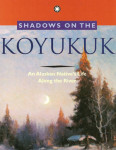
If you haven’t read his biography Shadows on the Koyukuk, written with Jim Rearden in 1993 and still in print, treat yourself to a good yarn about a good man whose life encompasses a huge swath of Alaska history.
Sidney was born in 1915 around the time when the first non-Native settlers were moving into the Country. His mother was a traditional Athabascan woman; his father was a trader and a gold-seeker. “Half Indian,” as he called himself, and half white, he faced discrimination from both sides.
I once spent a morning at the Sidney C. Huntington School in Galena interviewing students about Sidney. They were shy and not as vocal as I’d hoped. As I was leaving, a resource teacher chased after me. “I have something to say about Sidney,” she said. “I moved to Galena two years ago and Sidney was one of the first people I met. He told me, ‘Don’t ever let anyone tell you that you don’t belong here. If you live here, you’re one of us.” That was Sidney. He would not tolerate discrimination, perhaps because he endured so much of it growing up.
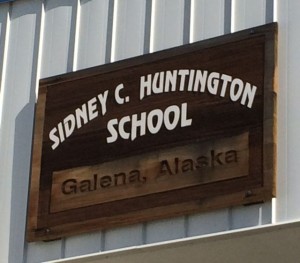
He had a passion for education. In the early ‘70s, he was part of a committed group that formed the Galena City School District. He then served on the School Board for the next 21 years. He often reached in his own pocket and made loans to young people for education, and, in his later years, he was a familiar face around the school in Galena that bears his name, just being there for the kids. I believe his interest in education grew out of his belief that education is the most powerful tool to overcome discrimination.

Sidney (pictured in the middle) shortly after the death of his mother. To his right are brother Jimmy and sister Marion.
Sidney had to learn to survive early. When he was five years old his mother died, and he had to keep himself and his two younger siblings alive for over two weeks until they were rescued. That early experience gave him the confidence to face the many ordeals and tragedies that came later.
Mid-way through his life, he was attacked by the demon that delights in bringing down strong men: alcohol. Once he made up his mind to put that behind him, he never looked back and he never looked down on others going through similar problems. Instead, he dug in and helped.
His gruff, but fathomless generosity is legendary. Everyone in Galena has stories. They say he even gave away his first casket to someone who had a more immediate need for it. When I first met Sidney, this tough-as-nails old man cried when he talked to me about two of his sons who committed suicide. I asked if I could include those personal stories in the play I was writing about him. “If you think it might help even one kid, then go for it,” he said and he never wavered in his support.
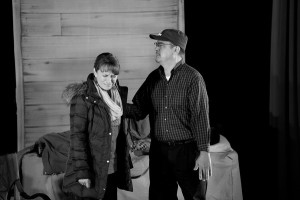
Actors Therisa Bennett (Miranda Huntington) and Allan Hayton (Sidney Huntington) perform an emotional scene from THE WINTER BEAR.
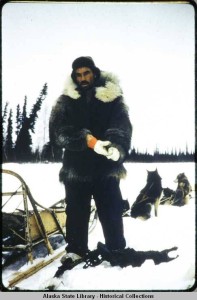
Sidney on the trapline in 1958. Photo: Alaska State Library.
I’ll always be grateful to Sidney and to his family for allowing me to share their private memories on a public stage. Their deep generosity has inspired others to open up and share their stories and that’s what will ultimately change the climate of fear and hopelessness that breeds suicide.
Sidney Huntington wore many hats over the course of his long life. He was a hunter, a trapper and a fisherman. That he was always able to provide for his family was a source of great pride to him. He was a miner, a carpenter, and for many years he operated a fish processing plant. He was a member of the Board of Game for 17 years and received an honorary PhD from the University of Alaska Fairbanks. He was an educator, a mentor, a motivator and honorary “coach” to the Galena Boys and Girls Basketball team. He was a writer.
Sidney Huntington was a lot of things to a lot of people, but one thing he was not: He was not a quitter. He never quit on people. He never quit on learning. He never quit on living. At an age when he had every excuse to rest on his laurels, he kept on writing, speaking, reaching out to challenge people, especially young Alaska Native people, to be better, to aim higher, to survive and prosper no matter what the obstacles.
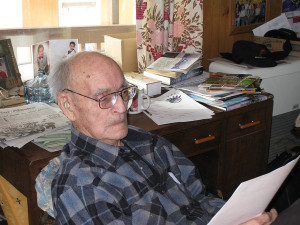
Sidney at his home in Galena, circa 2010.
Sidney Huntington belonged to a time when survival took every ounce of a man’s mettle. We’ll not see the likes of him again. But he also belonged to our time and now he’s gone and we will sorely miss his tough love.
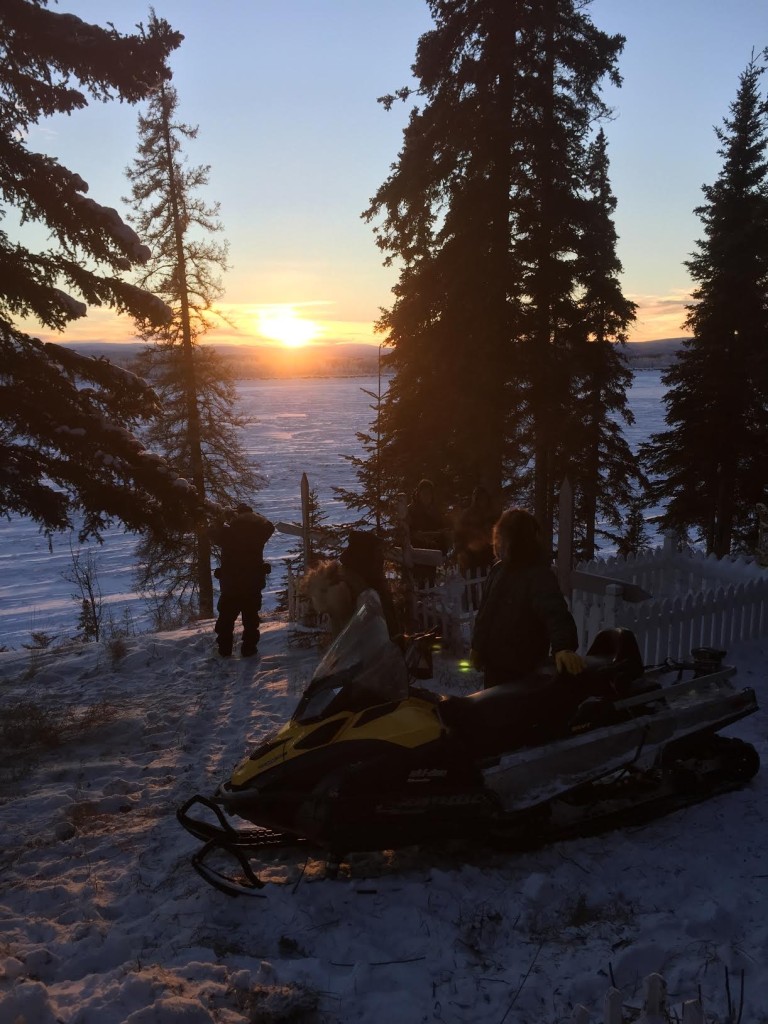
Grandpa Sid’s Resting Place. Photo by Karrie Pavish Anderson
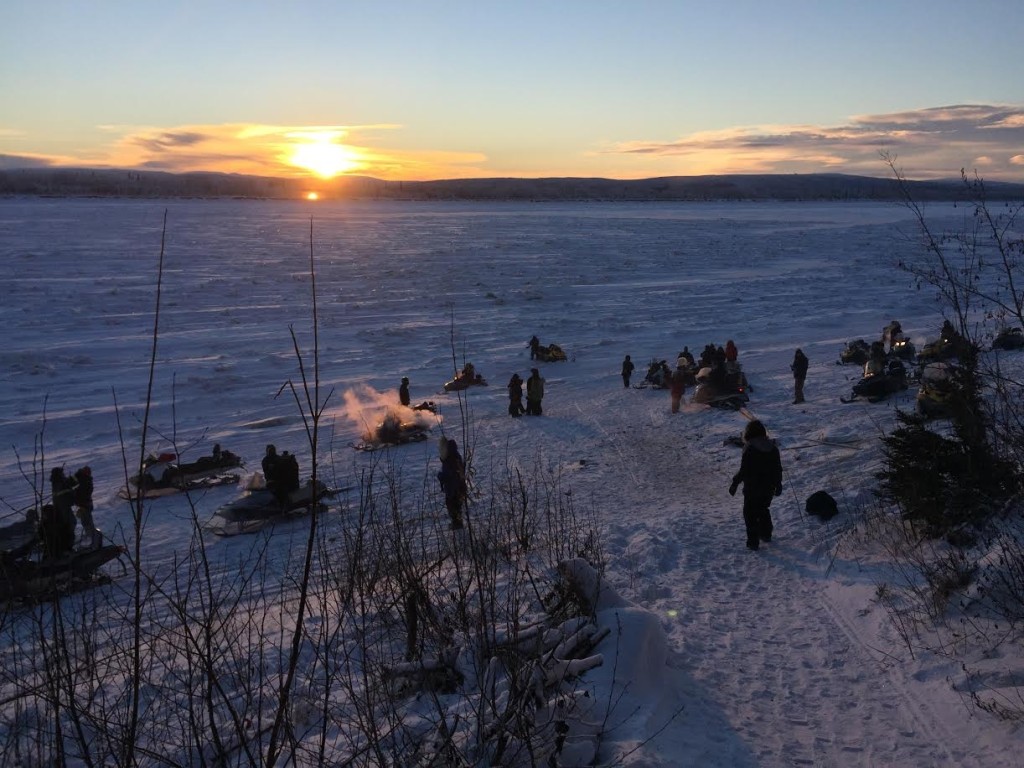
Galena residents depart the burial site. Photo by Karrie Pavish Anderson

